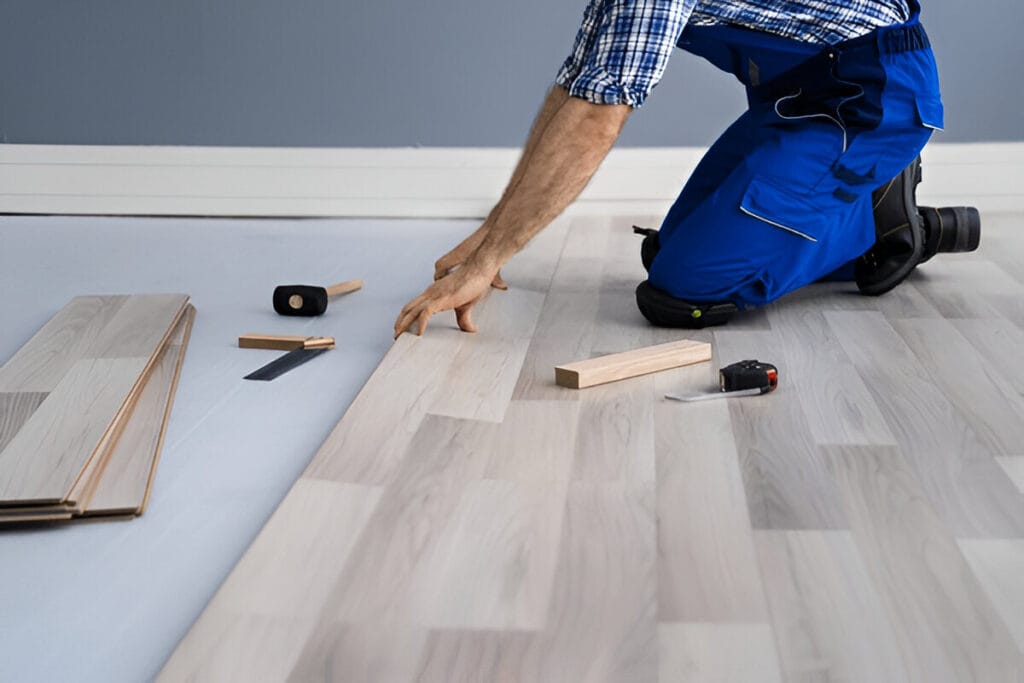Laminate Flooring Installation: A Guide to Durable and Stylish Floors
Laminate flooring has become one of the most popular choices for homeowners and businesses seeking a cost-effective, durable, and visually appealing flooring solution. With a wide range of styles that mimic the look of natural wood, stone, or tile, laminate flooring can transform any space without breaking the bank. Whether you’re upgrading your home, revamping a rental property, or giving your office a modern edge, understanding laminate flooring installation is key to achieving a professional result. Why Choose Laminate Flooring? Laminate flooring offers several benefits that make it a preferred option for various spaces. It is affordable compared to hardwood or stone flooring, yet it provides a similar aesthetic. Its durability and resistance to scratches, stains, and fading make it ideal for high-traffic areas, including living rooms, kitchens, and even commercial spaces. Additionally, laminate flooring is easy to maintain. Regular sweeping and occasional mopping are usually all that’s needed to keep it looking new. It is also versatile in design, allowing homeowners to choose from a variety of textures and colors that suit their style preferences. Steps in Laminate Flooring Installation Proper installation is essential for laminate flooring to deliver on its promise of beauty and durability. Below is a step-by-step guide to the process. 1. Preparing the Subfloor The first step is to prepare the subfloor, which must be clean, level, and dry. Uneven surfaces can lead to problems like gaps or squeaks, so it’s essential to fill in any depressions and sand down high spots. Additionally, the subfloor should be free of moisture to prevent warping or damage to the laminate. 2. Choosing Underlayment An underlayment is typically installed beneath laminate flooring to provide cushioning, reduce noise, and act as a moisture barrier. The type of underlayment chosen depends on the flooring location and the desired level of soundproofing. For instance, a foam underlayment is suitable for most residential spaces, while a vapor barrier might be necessary in basements or areas with higher humidity levels. 3. Acclimating the Flooring Laminate planks need to acclimate to the room’s environment before installation. This involves leaving the flooring materials in the room for at least 48 hours to adjust to the temperature and humidity. Skipping this step could lead to expansion or contraction issues later. 4. Laying the First Row The installation process begins by laying the first row of planks along the longest wall in the room. Spacers are used to create a gap between the planks and the wall, allowing for natural expansion and contraction due to temperature changes. Each plank is connected using the interlocking mechanism, ensuring a snug fit. 5. Continuing the Installation Subsequent rows are installed in a staggered pattern to improve stability and create a visually appealing design. Each plank is carefully tapped into place to ensure tight seams and a seamless look. Precision cutting is required for planks near walls, doorways, and other obstacles. 6. Installing Trim and Moldings Once all the planks are laid, the spacers are removed, and trim or baseboards are installed to cover the expansion gaps. Moldings are also added at doorways or transitions to other flooring types, completing the installation. 7. Post-Installation Care After installation, it’s important to avoid heavy traffic on the new flooring for at least 24 hours to allow it to settle. Routine cleaning and using protective pads under furniture will help maintain the flooring’s pristine condition. Challenges in Laminate Flooring Installation While laminate flooring installation is often marketed as DIY-friendly, challenges can arise, especially for beginners. Uneven subfloors, tricky cuts around corners or fixtures, and ensuring the planks lock tightly can be daunting tasks without the right tools and experience. Additionally, mistakes during installation can lead to gaps, creaks, or even damage to the flooring. This is where professional expertise can make a significant difference. Hiring skilled installers ensures the job is done correctly, saving time, reducing stress, and delivering a polished finish that enhances the room’s appeal. Who Benefits from Laminate Flooring Services? Laminate flooring installation is an excellent choice for a variety of clients: • Homeowners: Those looking to upgrade their interiors with stylish yet budget-friendly flooring often turn to laminate. Its wide range of designs allows it to complement any décor style, from rustic to modern. •Landlords: Rental properties experience high foot traffic, and laminate flooring offers a durable, low-maintenance option that withstands wear and tear while maintaining an attractive appearance for tenants. • Businesses: Office spaces, retail stores, and restaurants benefit from laminate flooring’s durability and cost-effectiveness, allowing them to achieve a professional look without a hefty price tag. The Expert Touch ZZ the HandyMan has transformed numerous homes and commercial spaces with expertly installed laminate flooring. From helping a homeowner achieve a warm, inviting living room to assisting a business owner in creating a sleek, modern office, ZZ the HandyMan’s work has left a lasting impression. Each project is approached with meticulous attention to detail, ensuring the flooring not only looks great but also performs well for years to come. If you’re ready to upgrade your space with laminate flooring, let the professionals handle it for you. Contact ZZ the HandyMan today and enjoy flawless results that will elevate the look and feel of your property.
Laminate Flooring Installation: A Guide to Durable and Stylish Floors Read More »



